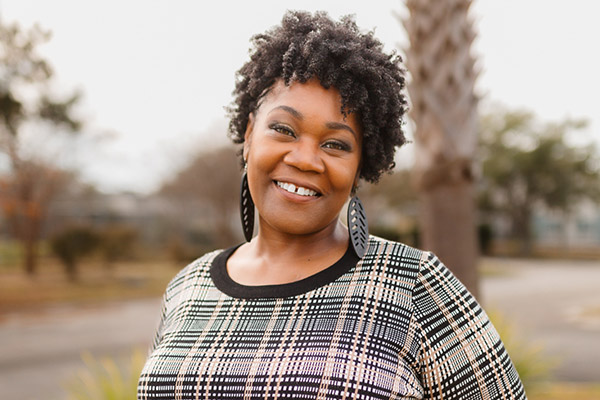11/04/2022

An 82-year-old client lives with bladder cancer. After cataract surgery, he developed a urinary tract infection (UTI) and sepsis and had to spend 10 days in the hospital. Now he’s home, on IV antibiotics, and wants a massage.
His therapist wonders, will he ever be able to receive massage again?
Resources:
Pocket Pathology: https://www.abmp.com/abmp-pocket-pathology-app
IHACW: Descending Necrotizing Mediastinitis
M&B article on sepsis and post-sepsis syndrome


[music]
0:00:01.2 Ruth Werner: Hey, I Have a Client Who listeners, did you know I have a growing library of NCB approved one-hour online self-paced continuing education courses that you can do any time, anywhere? Well, now you know. Current classes include: What's Next: COVID-19 Updates from Massage Therapists and A Massage Therapists Introduction to Pharmacology Part One, and brand new, A Massage Therapist's Introduction to Pharmacology Part Two. Classes are $20 each and they confer one hour of continuing education credit. Wanna know more? Visit my website at ruthwerner.com and check it out. Be sure to sign up for my mailing list so you'll never miss a new class.
[music]
0:00:56.1 RW: Hi, and welcome to I Have a Client Who, pathology conversations with Ruth Werner, the podcast where I will discuss your real life stories about clients with conditions that are perplexing or confusing. I'm Ruth Werner, author of A Massage Therapist Guide to Pathology, and I have spent decades studying, writing about and teaching about where massage therapy intersects with diseases and conditions that might limit our client's health.
0:01:24.9 RW: We almost always have something good to offer even with our most challenged clients, but we need to figure out a way to do that safely, effectively and within our scope of practice. And sometimes, as we have all learned, that is harder than it looks. Today's story comes from a massage therapist with an older client who had a serious post-surgical complication. They worry he may never be able to receive massage again, but I'm happy to say with some care and a bit of time, he will probably be a great candidate for some kinds of body work again soon. And our story goes like this. I've been seeing a client, an 82-year-old man for 20 years, he's had bladder cancer for about eight years and is doing well with managing that. Then he had cataract surgery and he got a bacterial infection. He was in the hospital for 10 days with a urinary tract infection. Now he's on home antibiotics treatment with a port. I was reading about UTIs that go to sepsis, the recurrence of sepsis infection is high. Will he ever be able to receive massage again? Then, this massage therapist told me they'd spoken with the client's doctor who seemed to think that massage would be safe, but the timing was off.
0:02:43.4 RW: And the client had a second eye surgery plus he's still on antibiotics. And they make an excellent point that it's probably best to wait until the antibiotic treatment is completed, plus there's very little published about massage and sepsis. Boy, they have that right. I wrote an article on sepsis and post-sepsis syndrome in the November, December 2021 edition of massage and body work, and of course, I'll put a link to it in the show notes and the bibliography from that article provides most of what I'm sharing with you today. As it happened, our contributor found that article too, which is good to know, but they found, as I did, a real dearth of actual data about hands-on work for people dealing with sepsis. I thought I had done an I Have a Client Who episode on sepsis, but for the life of me, I couldn't find it. Finally, I figured out it was in the context of a pretty obscure condition called descending necrotizing mediastinitis. The client in that case had developed sepsis with some really serious long-term consequences, and guess where you will find a link to that podcast?
0:03:51.6 RW: So let's talk about sepsis a little bit because this is a situation that many people, including me until quite recently, don't understand well. And then we'll come back to think about what happens next for our 82-year-old man with bladder cancer, two eye surgeries and IV antibiotics, who wants to receive massage. You have probably heard of blood poisoning or septicemia. This describes a situation where infectious agents, usually bacteria but we could be talking about viruses or fungi, invade the entire cardiovascular system and sort of take over the body. However, this is not quite synonymous with sepsis. The technical definition for sepsis is this; it is a life-threatening organ dysfunction caused by a dysregulated host response to infection. So the sepsis is not an infection, it is a response to an infection. And there's a similar condition called systemic inflammatory response syndrome or SIRS, and it's basically the same thing. It's a life-threatening organ dysfunction caused by a dysregulated host response to...
0:05:10.5 RW: We're not always sure. There might have been an infection at one time, or it might be from pancreatitis or severe allergic reactions or cancer or any number of other things, but both of these situations, sepsis and SIRS, involve a big outsized and ultimately dangerous inflammatory reaction and this can cause all kinds of havoc from organ damage, liver failure and kidney failure are pretty common with sepsis, to blood vessels that shut down with inflammation-related clotting, and this can lead to a need for amputation and a slew of other problems. And especially dangerous complication of sepsis is called septic shock, and this is where a person's blood pressure drops dangerously low, low enough that organs are damaged from a lack of blood flow. Septic shock poses a substantial risk for death.
0:06:05.9 RW: Now, some of this might be ringing some bells for some listeners, especially if you ever read any of my articles on COVID or have done any of those online classes with me. Because like COVID, sepsis is related to a triad of issues. There is an infection and the direct cellular damage from that, there's an appropriately aggressive immune system response, and then a completely out of whack, off-the-rails inflammatory reaction that becomes life-threatening. And like COVID, sepsis has another frequent complication, a post infection syndrome. Like long COVID, post-sepsis syndrome involves brain fog and weakness, poor stamina and many other symptoms that vary from one person to the next. One of the trickiest things about sepsis is that it is notoriously hard to identify before it becomes an emergency. A person can go from feeling not quite right to end stage organ failure or losing a limb in a matter of days or even hours.
0:07:19.3 RW: There are a few different in-the-field identifiers for sepsis, fever or low temperature, impaired mental state, and this might look like disorientation or just a kind of logginess that they can't shake off and low blood pressure, which sometimes shows as speeded up respiration. My son is a paramedic who sees sepsis with some regularity, and he tells me that the two main flags for him are altered mental state and fast breathing. But there are a handful of other medical emergencies that can look similar to this, including bleeding in the gastrointestinal tract, pulmonary embolism, diabetic ketoacidosis, and some others. So aren't you glad this isn't our call? We, as massage therapists, are extremely unlikely to see someone in an acute state of sepsis, I'm happy to say, but for someone like this client who is immune compromised both because of his advanced age and because of his cancer and cancer treatment, and who undergoes cataract surgery, a secondary bacterial infection that has gotten into his urinary system, that's not our reach.
0:08:28.5 RW: So let's talk about this gentleman for a moment. He developed sepsis after his first cataract surgery, a bacterial infection that started as a UTI, a urinary tract infection, remember he has bladder cancer, so this whole part of his body is very vulnerable. And that led to this dangerous inflammatory response that put him in the hospital for 10 days. 10 days, that's a lot. One of the people I interviewed for the article in massage and body work was in the hospital for 30 days and she had to go back again after two days at home. My point is the treatment priorities for someone with sepsis are to stabilize them, to manage their blood pressure, to stop organ damage, and then to treat any infection, and all of that together can take a lot of time and a lot of resources. When this massage therapist wrote to me, they said this, "Now he's on home antibiotic treatment with the port. I was reading about UTIs that go to sepsis. The recurrence of sepsis is high, will he ever be able to receive massage again?" Well, they are spot-on, UTIs are often the starting place for sepsis and a person with this history is at increased risk for a repeat event.
0:09:44.9 RW: Later, this massage therapist told me they'd spoken with the client's doctor who seemed to think that massage would be safe, but the timing was off, and the client had a second eye surgery, plus he's still on antibiotics. The massage therapist wonders if it wouldn't be best to wait until the client's sepsis treatment is complete before adding massage to his care. It's such a good question, and I truly appreciate this massage therapists conservatism. As we know, the fact that the doctor doesn't think massage would be a problem is great, but ultimately, we are the ones who have to balance the risks and benefits of our work to figure out the best ways we can be safe. So my response to the will he ever be able to receive massage again question is this. What is massage and what does he want to achieve with it? The client, even when he's been off his antibiotics and discharged from any care is likely to be somewhat more frail than before all these challenges that he's recently been through. Can you envision a massage session that would be too stimulating, too demanding, too overpowering for him? I can.
0:10:54.0 RW: Can you envision a session that could be supportive, soothing, restful, pain relieving? I can see that too. So I encourage this massage therapist to fall back on their listening skills to get a clear sense of what this gentleman is looking for. They've been working together for 20 years after all, and to offer that with the kindest, most responsive touch they know how to offer. He's been through a lot. I bet he is really looking forward to seeing you.
0:11:22.8 RW: Hey everybody, thanks for listening to I Have a Client Who, pathology conversations with Ruth Werner. Remember, you can send me your I Have a Client Who stories to ihaveaclientwho@abmp.com. That's I have a client who, all one word, all lower case @abmp.com. I can't wait to see what you send me and I'll see you next time.
[music]





